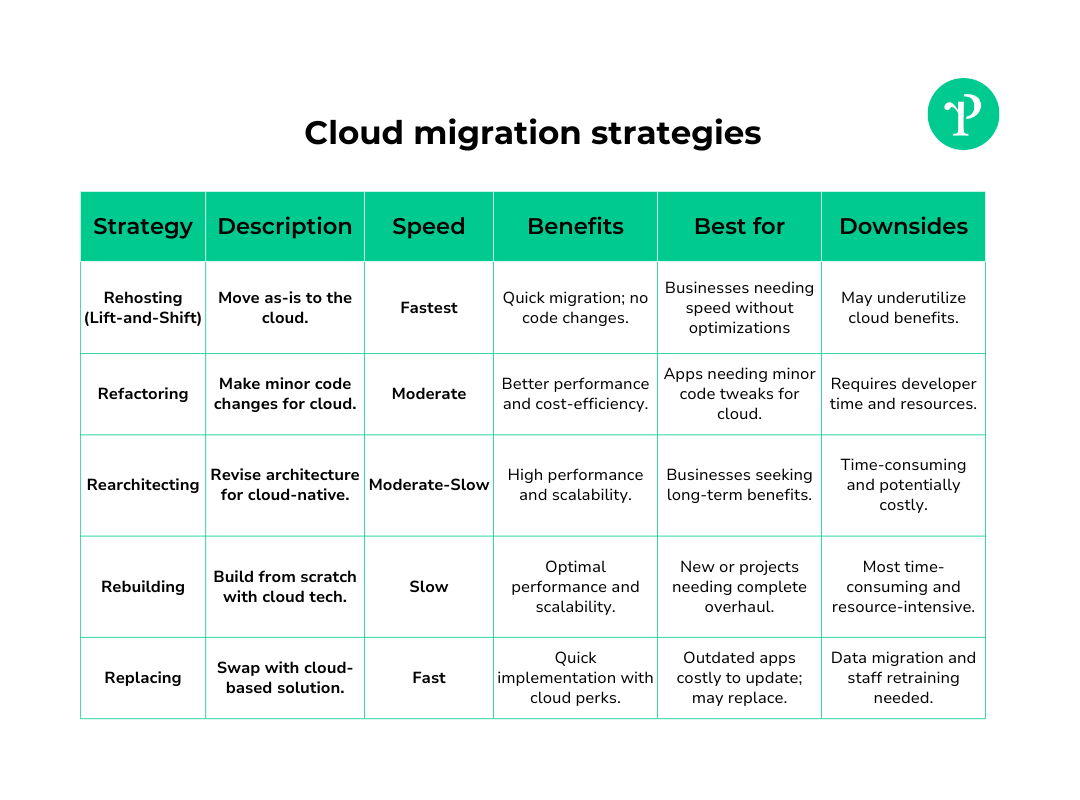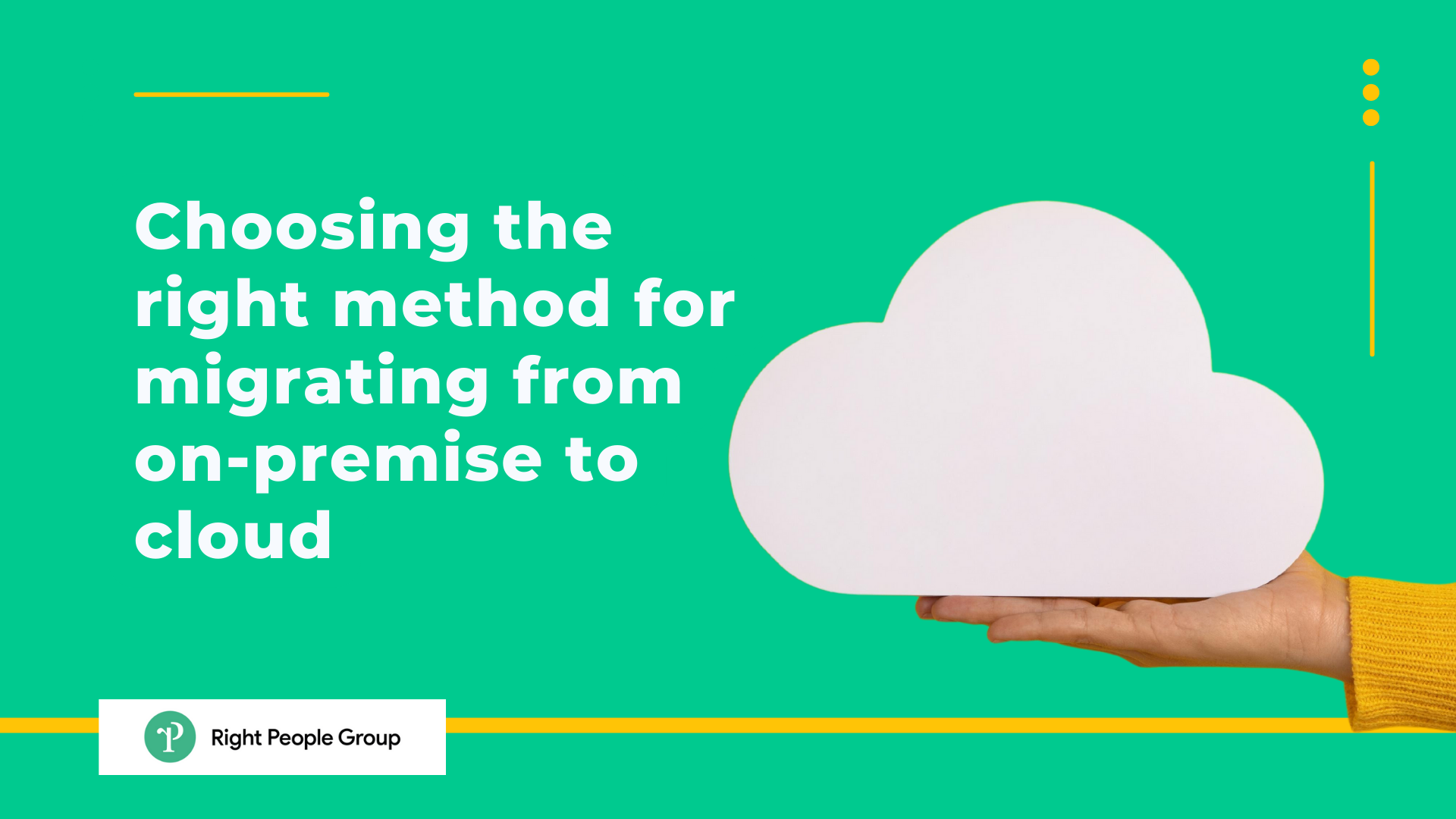Migrating from on-premise to cloud is a big step that can have a lasting impact on your organization. You’ll be moving data, applications, and various other business components from your local data center into cloud environments. It’s a complex transition that requires a cloud migration strategy with careful planning and execution.
To help you navigate this journey, this article serves as a comprehensive guide. We’ll explore different cloud migration strategies, important factors to consider before making the move, and how to address common challenges that may arise.
Why businesses migrate to the cloud
The benefits of cloud migration are numerous.
Cost savings are often the most cited advantage. Cloud infrastructure allows you to only pay for what you use, eliminating the need for heavy investment in physical infrastructure.
Scalability is another major benefit; you can easily adjust your usage based on your needs.
Flexibility and mobility are also improved, allowing your team to access data and applications from anywhere.
Lastly, cloud service providers often offer robust disaster recovery options, making it easier to recover from unexpected events.
Types of cloud migration strategies
When it comes to premise-to-cloud migration, there are several strategies to consider.
Each strategy has its own set of advantages and disadvantages, and the best choice depends on your specific needs, timeline, and resources.
Weigh these migration strategy options carefully for your cloud migration project.

Rehosting (Lift-and-Shift)
What it is: You move everything from your on-premise setup to the cloud, as is, without making any changes.
Speed: This is the fastest way to get things into the cloud.
Best for: Businesses that need to move quickly and don’t require any special cloud features.
Downside: You might not be making the most of what cloud services offer in terms of performance and cost-efficiency.
Refactoring
What it is: You make small changes to your code so you can take advantage of cloud features.
Benefits: Better performance and reduced costs, thanks to using cloud-native features.
Best for: Applications that need minor tweaks to benefit from the cloud.
Downside: Requires some code changes, which means you’ll need developer time and resources.
Rearchitecting
What it is: You change the architecture of your application to fit better with cloud-native features.
Benefits: High performance and scalability, as you’re using the cloud to its full potential.
Best for: Businesses looking for long-term benefits and are willing to invest time and resources.
Downside: Time-consuming and could be expensive in the short term.
Rebuilding
What it is: You build the application from the ground up using cloud-native technologies.
Benefits: Optimal performance and scalability, as the application is tailor-made for the cloud.
Best for: New projects or existing projects that need a complete overhaul.
Downside: Most time-consuming and resource-intensive. You’re essentially starting from scratch.
Replacing
What it is: You ditch your old application and switch to a cloud-based solution.
Benefits: Quick to implement and you get all the advantages of a cloud-native application.
Best for: Outdated applications that are more expensive to update than replace.
Downside: You’ll need to migrate data and possibly retrain staff to use the new application.
Factors to consider before migration
Before you dive into your cloud migration project, it’s important to weigh practical factors too.
You don’t want to invest significant time and resources into your migration, only to face issues like unexpected delays, data loss, or spending more money than you planned.
Here’s what to look at:
Business objectives and timelines
Understanding your business goals and timelines is another important factor. Are you looking to achieve cost savings, improve scalability, or perhaps enhance disaster recovery? Knowing your objectives will guide your choice of cloud migration strategies.
Align your cloud migration project with your business objectives and set realistic timelines to ensure a successful transition to the cloud environment.
Current infrastructure
Take a close look at your existing physical infrastructure. Identify the servers, databases, and applications that you plan to move. This step helps you understand the scope of your cloud migration process.
Knowing what you have and what you need to move sets the stage for a smoother transition to the cloud environment.
Compliance and security
Security is a top concern, especially when you’re handling sensitive data. Make sure to understand the cloud security protocols offered by cloud service providers. You’ll also need to be aware of any industry-specific regulations, such as GDPR for European customers or HIPAA for healthcare data in the United States.
Aligning your migration strategy with these regulations ensures that you maintain compliance while benefiting from cloud technologies.
Budget
Financial planning is a key aspect of any cloud migration project. A well-defined budget helps you avoid unexpected costs. Insufficient pre-migration analysis can result in budget overruns, causing stress and delays.
To prevent this, get quotes from multiple cloud providers and consider the costs of cloud migration tools and services.
Also, factor in ongoing costs like subscription fees for cloud services and additional costs for data transfer or extra storage.
IT skillset
The skills of your IT team can make or break your migration process. Make sure your team is well-versed in cloud computing and the specific cloud platform you choose, whether it’s AWS, Google Cloud Platform, or another provider.
If there are gaps in your team’s expertise, consider training programs or hiring specialists. This ensures that you have the technical skills needed to manage cloud resources effectively.
Steps to choose the right migration method
Conduct a readiness assessment: Evaluate your organization’s preparedness for cloud migration.
Identify key stakeholders: Involve everyone who will be affected by the migration strategy.
Choose the cloud model: Decide between a single cloud, multi-cloud, or hybrid cloud environment.
Map out a plan: Create a detailed cloud migration process plan.
Perform a pilot test: Before fully migrating data, run a small test to identify any potential issues.
Common cloud migration challenges and how to overcome them
Navigating the path from on-premise to cloud migration comes with its own set of hurdles. However, knowing these challenges in advance can help you prepare better. Here’s how to tackle some of the most common issues:
Downtime
One of the biggest concerns during cloud migration is downtime, which can disrupt your business operations. To mitigate this, schedule your migration activities during off-peak hours. This way, you can minimize the impact on your customers and your business. Make sure you have a reliable internet connection to ensure a smooth transition.
Data loss
Losing valuable data during the migration process can be disastrous. To prevent this, use specialized data migration tools. These tools help you transfer data securely from your data center to the cloud environment. Before you start, back up all your data. This provides an extra layer of security in case something goes wrong.
Security risks
Security is a top concern, especially when dealing with sensitive data. To address this, collaborate closely with your chosen cloud service provider. They often offer robust cloud security measures to protect your data. Make sure to understand the security protocols and compliance requirements before you start the on-premise to cloud migration process.
Budget overruns
Cloud migration projects can become expensive if not managed well. To avoid going over budget, conduct a thorough pre-migration analysis. This helps you understand the costs involved and how they fit into your budget. Keep track of your spending and make adjustments as necessary to stay within your financial limits.
Skillset limitations
If your team isn’t well-versed in cloud technologies, you could face delays and errors in your on-premise to cloud migration process. To address this, you have two main options: bring in cloud migration experts for consultation or invest in training for your existing staff. Either approach will help ensure that your team has the necessary skills to manage the migration effectively.
Tools and resources for cloud migration
Choosing the right tools and resources is vital for a successful transition from on-premise to cloud.
Here’s a focused list of some top resources to guide you through a smooth migration process.
AWS database migration service
Amazon Web Services offers this tool to simplify your migration project. It supports a variety of databases and allows for real-time data replication, minimizing downtime. If you’re looking for a reliable way to transfer data, AWS database migration service is a strong contender.
Google Cloud’s transfer service
Offered by Google Cloud Platform, this service is designed for transferring large datasets quickly and securely. It’s particularly useful if you’re migrating data from an existing data center to Google’s cloud environment.
Specialized tools
There are also specialized cloud migration tools tailored to meet specific needs. These can range from data migration tools to comprehensive solutions that manage the entire migration process. Make sure to select a tool that aligns with your specific requirements.
External experts
Sometimes the complexity of a cloud migration project requires specialized knowledge that your in-house team might not possess.
In such cases, hiring external cloud consultants can provide valuable insights and hands-on experience to ensure a successful migration.
These experts can guide you through the intricacies of cloud security, data migration, and even help you choose between multiple cloud providers.
Cloud service provider support
Never underestimate the value of the support services offered by your chosen cloud provider. Whether you need technical assistance or strategic advice, your cloud service provider could be invaluable during the migration process.
Conclusion
Choosing the right method for migrating from on-premise to cloud is a complex but rewarding process. It requires careful planning, the right set of tools, and a clear understanding of your organization’s needs and limitations. However, the benefits, such as cost savings, scalability, and disaster recovery, make it a worthwhile endeavor.
Need a cloud consultant?
Looking for expert cloud consultants?
At Right People Group, we connect you with experienced cloud architects, cloud engineers, and cloud security specialists who offer tailored guidance, mitigate common errors, and ensure seamless cloud project execution.
Contact us today to discover your ideal consultant.













